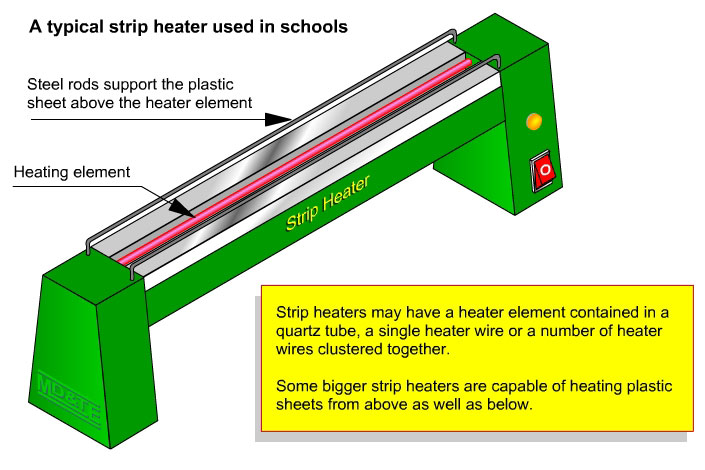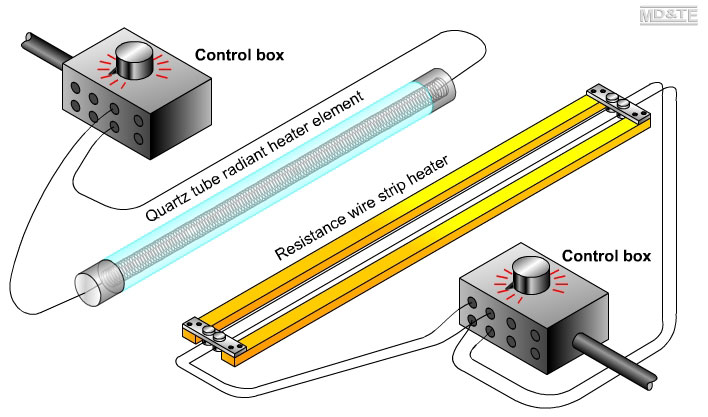Introduction
Thermoplastics sheet materials soften when they are heated. When softened, thermoplastics can be bent, twisted and formed in a variety of ways such as by press forming, vacuum forming and by blow moulding.
Various types of heaters are used to heat thermoplastics so that they can be bent and formed, including:
- heaters that heat a narrow strip
- heaters that heat all or most of a sheet of plastic
- heaters that are in contact with the plastic
- heaters that are not in contact with the plastic
For line bending, a narrow strip of plastic is heated. Generally, the thicker the plastic, the wider the heated strip needs to be.

Strip Heaters / Line Benders
Strip heaters, also known as line benders, consist of a resistance wire heating element (such as nickel-chrome resistance wire) that heats up when a controlled amount of current is passed through it.
The heating element may be:
- a single nickel-chrome resistance wire stretched between two terminals
- two or more nickel-chrome resistance wires stretched between terminals
- braided resistance wire
- a coiled resistance wire element enclosed in a quartz, metal or plastic tube.
These heaters radiate heat. Thermoplastic sheets are held close to the heating element but are not in contact with it.

Contact Heaters
Resistance wire heater elements may be encased in a metal or plastic sheath. These heaters are held in contact with thermoplastics. A metal casing with a hatchet profile is used to apply heat directly to a thermoplastic. Resistance wire encased in a metal band may be used to heat thermoplastic and metal rods, tubes and drums.
The diagram below illustrates a typical contact type strip heater consisting of resistance wire sandwiched between sheets of flexible silicone. Flexible silicone heaters may be used on curved as well as flat surfaces.
![]()
| Click here to view the PDF version of this resource. | 
|
 |